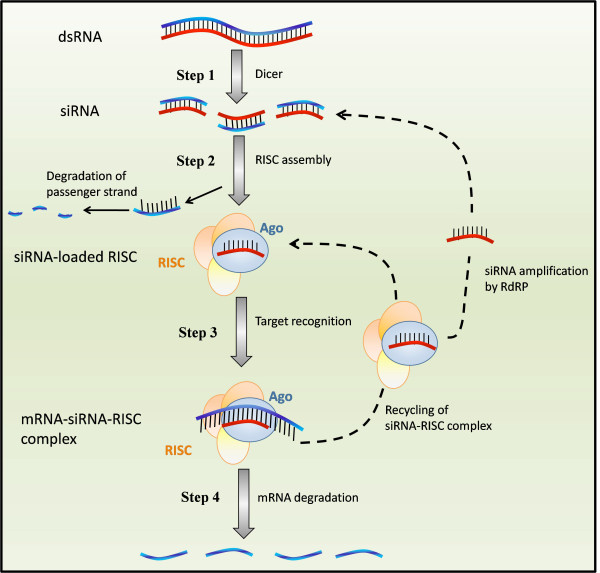Figure 1.
Schematic representation of RNA interference in a mammalian cell. Step 1: double stranded RNA (dsRNA) elicits a response in the cell mediated by the enzyme Dicer, which cleaves the dsRNA into fragments of 21-23 base pairs (siRNA). Step 2: siRNAs are loaded into a multiprotein complex called RNA Induced Silencing Complex (RISC) and one strand (the passenger strand) is discarded and degraded [14], while the guide strand remains within RISC as template in the silencing reaction. Step 3: the guide strand assembles into a functional siRNA-RISC complex, which contains the siRNA bound to the Ago protein [1]. Targets mRNAs are then recognized by Watson-Crick base pairing [1] and bound by the siRNA-RISC complex. Step 4: mRNA degradation is induced, the target mRNA is dissociated from the siRNA, and the siRNA-RISC complex is released to process further mRNA targets [15].

